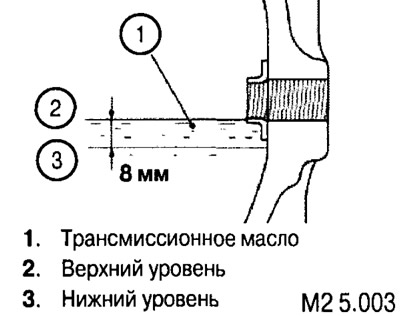Moreover, in order for the drive shafts to have a length close to the same, the so-called inner shaft is installed in the main gear housing, which is, in fact, an extension that compensates for the displacement of the main gear from the vehicle axis.
A feature of the front axle in the all-wheel drive version is the presence of a mechanism that disconnects the right drive shaft from the front axle differential. Moreover, the front axle is turned off in the transfer case, in which there is a sensor (limit switch) disengagement of the front axle. And the mechanism installed in the front axle, using a vacuum drive, disconnects the right drive shaft from the differential so that energy is not wasted on the rotation of the cardan shaft (through overdrive) and associated transfer case mechanisms. This allows you to reduce the resistance to rotation of the front wheels in rear-wheel drive mode (2WD).
For cars with mono drive (further 2WD)
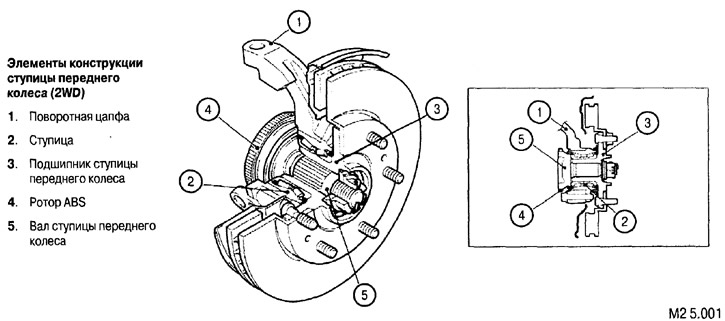
For vehicles with all-wheel drive (further 4WD)
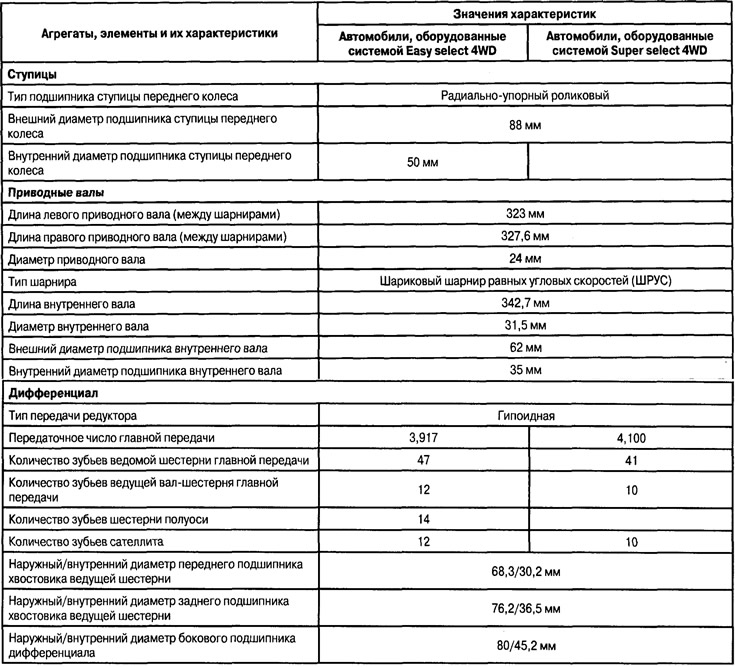
Structural elements of the front axle (4WD)
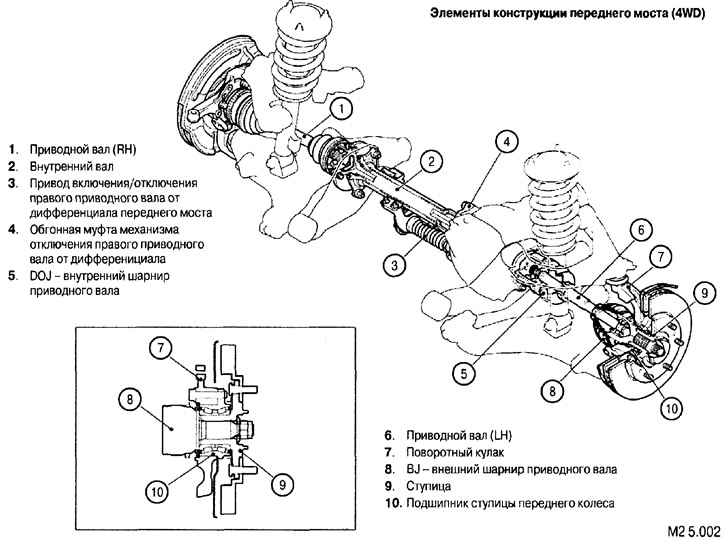
1. Drive shaft (RH); 2. Inner shaft; 3. Drive on / off of the right drive shaft from the front axle differential; 4. Overrunning clutch of the mechanism for disconnecting the right drive shaft from the differential; 5. DOJ - internal joint of the drive shaft
Control and adjustment parameters
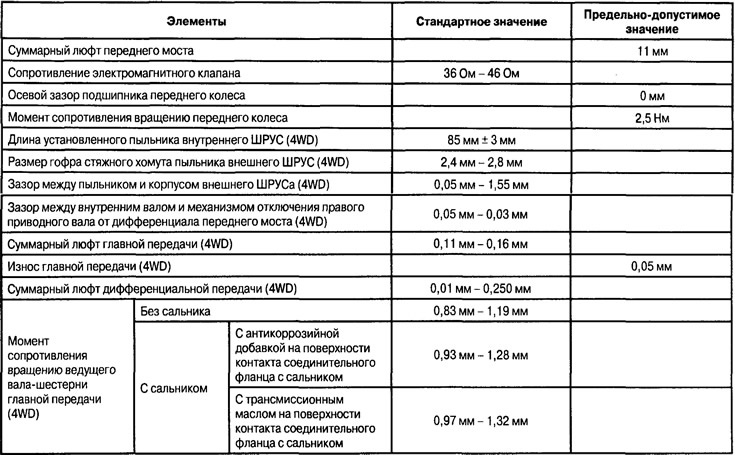
Lubricant (4WD)
The complex of service properties of oil for the front differential: oil for hypoid gears of group GL5 or higher according to API classification.
Viscosity:
- above 10°C: SAE 90;
- below 10°C: SAE 80W.
The amount of oil in the crankcase of the front axle gearbox: 1.2 liters.
The amount of grease put into the inner CV joint: 125±10 g.
The amount of grease put into the outer CV joint: 120±10 g.
Transmission oil level in the front axle gearbox (4WD)
The gear oil level must be at least 8 mm from the lower edge of the filler hole (as shown in fig. M2 5.002). Filler plug tightening torque: 50±10 Nm.
